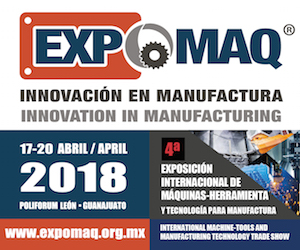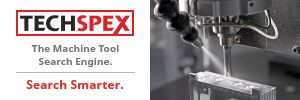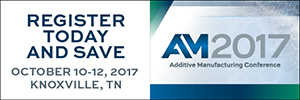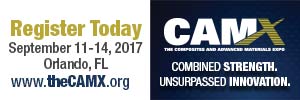End of Cold War Leads to Cold Welding
When the Iron Curtain fell, it opened up new opportunities. The countries that were once part of the Soviet bloc are using American ingenuities to rebuild crumbling infrastructure and economies, and even to catch up technologically. What we forget is that the Soviets had a network of research facilities dedicated to advancing military and aeronautical interests. One of these facilities, the E.O. Paton Institute (Ukraine, Kiev), has been working with Tabco Technologies, Inc. (Pawtucket, RI) to market several declassified technologies.
Magnetic pulse welding (MPW) is one such technology. It is a cold welding process that works when a magnetic pulse is used to create a high-velocity impact between two materials, causing a metallurgical bond.
Basic physics principles are behind why the MPW process works. The interaction between magnetic fields dictates that two conductors with currents running in the same direction will attract each other, while currents running in opposite directions will repel each other.
If we were to use this process to weld two pieces of tubing, here’s how it would work. First, we’d have to make sure the pieces were properly prepared. “The key to making sure this process works is to make sure the pieces have good, oxide-free surfaces,” says Tom Barber, president of Tabco Technologies. After cleaning the pieces, they should be properly aligned for the weld.
Next, the pieces are placed between the welder’s two coil inductors. Voltage is sent through a rectifier, causing a direct high voltage to appear at its output. A charge is stored in the capacitor bank. Regulating the maximum level to be stored is a discharger unit that sends short, high-current impulses to the inductors, where it creates a magnetic field. The field forces the creation of a circling current in the outer tubing, repelling it from the coil inductors at high speed. The impact causes the outer tubing to penetrate the inner tubing. This sort of limited-space explosion metallurgically bonds the two pieces together in about 20 millionths of a second.
So after we’ve welded the two tubes, what comes next? Most likely, nothing. “Once the bond (weld) has been made, the part is done in most cases,” says Barber. “There is no clean-up and no post-operation grinding or finishing.”
Now let’s say one of the pieces of tubing is steel and the other is aluminum. “Joining different metals to one another is usually not a problem using MPW,” says Barber. “I know there’s usually some pretty exotic filler metals used to join aluminum to steel.” Barber goes on to say that the process is more metallurgical bonding than traditional welding, so the reaction between the two metals is different.
After putting the process through a barrage of tests (helium leak detection, corrosion resistance, pressure tests, destructive tests, vibration analysis, etc.), the results show that the welds hold up quite well. Its ability to join disparate metals gives it a lot of potential uses in the automotive industry. A few suppliers are already using the process for air conditioning system parts. Others are looking at the system for structural applications.
Working the System
Lincoln Electric Co. (Cleveland, OH) has introduced a welding system for GMAW pulse, GMAW short arc and spray, FCAW, and stick welding applications. The Power Wave 455/Power Feed 10 has a fully removable control box and wire feeder, one common control cable, and a programmable power source. Modularity is key here. Users choose the best setup, putting the control box either at the work site, near the power source or in any other remote location. The control box itself can be tailored to specific applications by exchanging control panels. Just flipping a switch lets users change from one type of welding to another. Powering the system is the Power Wave 455, a digitally controlled inverter power source. When used with the Power Feed 10 wire feeder, the source can perform high-speed waveform control. The Power Feed 10’s drive system is designed to make it easier for drive roll and split wire guide changeovers. Explore more about welding solutions at adandp.media.
Joining, The Plastics Craze
In the greater realm of joining technology, plastic joining is often lumped into the category of assembly. The art of plastic welding is coming into its own, however, as the use of plastics and other polymers grows. “Improvements in plastics technology have meant that plastics are replacing metals more and more,” says Richard Berger, Vice President of Marketing at Sonics & Materials, Inc. (Danbury, CT). “We’ve seen a pretty big increase in orders for equipment being used in automotive applications.”
Sonics & Materials manufactures ultrasonic welders along with various other assembly equipment. Ultrasonic welders use sound energy at high frequencies to soften (melt) thermoplastic workpieces at the joint. Pieces are held under pressure and then subjected to ultrasonic vibrations. The equipment itself requires precise configuration, and the fixtures and components must be designed carefully. Once made, however, the ultrasonic systems form welds in about one second per part, and they can be readily automated. This makes them a popular, cost-effective solution for mass production.
Currently, ultrasonics are being used to hermetically seal parts like lenses, filters, valves, and lamps, to name a few. Electrical components are also being welded using this method. In particular, says Berger, one manufacturer is using ultra-sonic welding on instrument clusters for Saturn’s on-board computer system.
Another equally popular plastic welding method is hot plate welding. According to literature from The Welding Institute (TWI, Abington, Cambridge, UK), a British welding association, this method is most likely “the simplest, yet most versatile plastic joining technique.”
Parts to be joined are placed on a hot plate until sufficiently melted, then joined under pressure and held in place until cooled. Typically flat, plates are now being produced in application-specific forms to weld three-dimensional joint profiles. Suppliers to various auto manufacturers are using this method for hydraulic fluid reservoirs and battery cases. This method is also being considered to weld tubing on all-plastic concept cars.
One other method worth mentioning is radio frequency welding (RF). Materials are fused using high-frequency energy to cause molecules to oscillate. This creates a heat energy that softens parts. Parts are then held under pressure until they cool. It’s important to note that not every plastic can be welded using this method. Molecular oscillation only occurs in some thermoplastics. Other than that, the resulting bond is dependent on the geometry of the plastic’s molecules and their dipole movement. In particular, polyethylene, polypropylene, and PTFE thermoplastics do not respond well to RF methods.
The next step in plastic welding seems to be moving toward welding bigger and bigger parts. “We’ve got bigger machines that are performing welding for under-hood parts,” says Berger. According to TWI, testing is underway for welding bumpers, hoods, and even side panels.
MIG for Aluminum
The XMT 304 CC/CV inverter power source and XR push-pull wire feeder have been bundled into what Miller Electric (Appleton, WI) is calling the “Ultimate Aluminum MIG Package.” Along with the power source and wire feeder, the kit includes a portable cart and all cables and hoses. All the operator needs to do to start welding is set parameters and supply the aluminum wire and shielding gas. The power system is said to have faster inverter reactions to puddle conditions, and to control heat more precisely, giving the user better puddle control. The faster inverter reaction provides a more stable arc, and the heat control gives the weld puddle a chance to freeze a bit between arcs, making it more controllable. The “push-me-pull-you”-type wire feeder consists of an XR push feeder and an XR pull gun that work together to provide steady wire feed rates. Rounding out the package’s features is a three-year factory warranty for the XMT 304 and the XR push feeder, and a one-year warranty for the pull gun.
Quality Equipment
- Selcom, Inc. (Southfield, MI) has introduced the SeamFinder system. It features a self-contained sensor and integrated software. The SLS 5000 sensor has a signal processor that averages and filters data. An RS-232 port is included, enabling the user to download programs and upload weld data. The system finds the joint to be welded and measures the gap. The software then adjusts welding parameters, and the robot is moved into position. The software also accommodates fillet, butt, and edge/overlap joints.
- Double sheet detectors developed by Roland Industrial Electronics, Inc. (Strongsville, OH), are being used for seam location after welding has taken place. Originally intended to prevent two blanks from entering the roll former at once, the system is also an effective means of detecting and monitoring weld seams entering, as well. Transmitter and receiver probes monitor thickness. Depending on the control unit chosen, thickness parameters are either manually adjusted or selected with upper, nominal, and lower switching limits.
- Checking resistance welds is the specialty of Weld Checkers from Unitek Miyachi Corp. (Monrovia, CA), helping to determine the best welding conditions, as well as recognizing potential weld problems. Preventive measures are then suggested. Models are available for hand-held post-process checking, as well as for in-process analysis. Larger models feature data storage, statistical process information, and built-in printers.
Thermal Stress Relief
The Metal-Lax Series 1700 is designed to relieve thermal stress within metal components. Nondestructive, subharmonic vibrations are used and can be applied during welding to reduce distortion and cracking. The 1700’s control console has LED indicator lights for diagnostic checks and a digital timer. Graphic display is provided in one of two ways (user’s choice): using the Meta-Lax DataChart, or using the Meta-Lax DataGraph.
Accurate Positioning
The ArcWorld II-616 welding system is engineered to have everything the welder needs to get the job done. The robot—an SK16—has an MRC controller with arc welding application software. It has also been redesigned with a more streamlined base, waist and arm, reducing areas of possible interference. A Ferris wheel-type part positioner sweeps 180° into the robot’s work envelope, while each side indexes 180° during the positioner sweep to position parts for welding. Powering the welding system is the Sensarc AL350. Designed for aluminum welding specifically, its penetration control varies the AC wave balance. While this is happening, the current alternates between reverse and straight polarity. This combination is said to melt the metal without burn-through. Also, a part of this welding system is Motoman’s total safety environment package. Redundant electrical interlocks, barrier guarding, protective arc curtains, single-point operator control, and others are grouped to keep users from accidental injury.
Guns Reduce Stress
Well, maybe not your garden variety semi-automatic off the street, but this semi-automatic is designed to reduce welder stress. The CustomSelect is a 600-A MIG welding gun ergonomically designed with the EZ Twist swivel conduit, which reduces stress on welders’ hands and wrists by letting them move the gun more easily. The guns are water-cooled, featuring a threaded water connection engineered to eliminate leaks. The CustomSelect is available in multiple styles; in custom configurations; and as part of a system with a torch, water circulator, flow switch, and hook-up kit.
Surf’s Up!
For the electronically inclined, there are a few resources you can use simply by surfing the ‘Net. The first place to start is amweld.org, the official website of the American Welding Society. From there, you can get application information to join AWS, take a look at new and revised standards; preview and order books and materials published by AWS, register for upcoming conferences; and go to related industry sites.
EWI’s materials joining technology site (www.ewi.org) has lots of good links and information about what went on at EWI’s International Conference on Advances in Welding Technology in September. One site you may not think of when looking for welding information is the National Institute of Standards and Technology’s (NIST) official site (www.nist.gov). Welding software information from two previously published papers is available. In particular, there is order information for a paper that discusses welding software. The other paper lists welding software programs and vendors.








